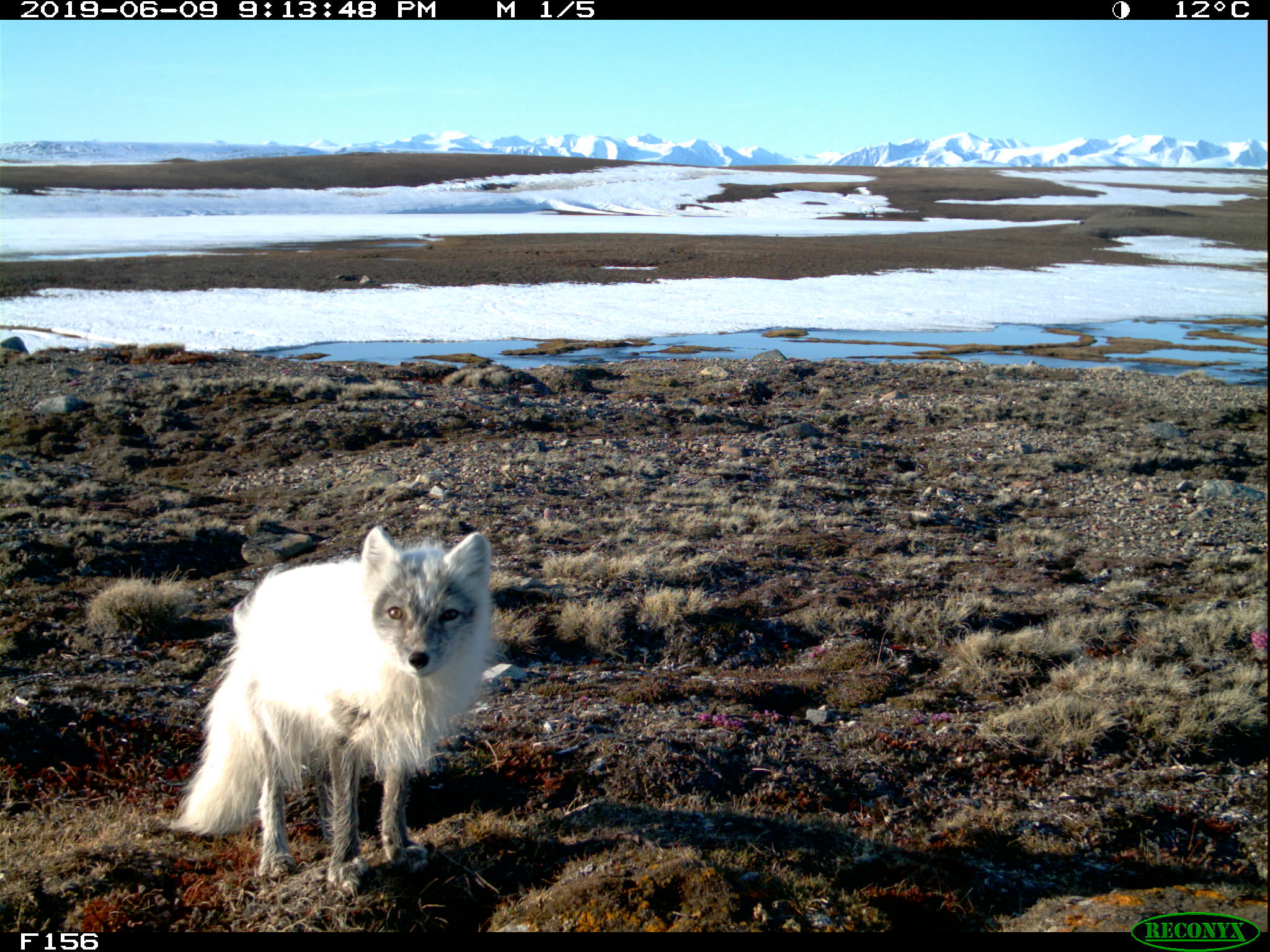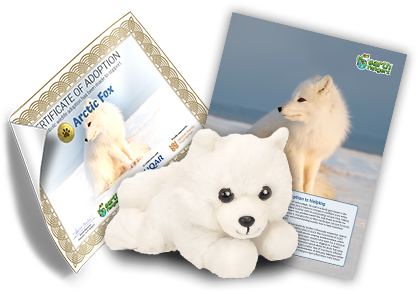If you saw an Arctic fox in the summer, it would look very different than it does in the winter. That’s because the Arctic fox is a master of camouflage. In the winter, its thick coat is a brilliant white, but in the summer it thins out and turns a dusty gray-brown to help blend in with the surrounding Arctic tundra. They feast on small rodents called lemmings and sometimes nesting bird species, using their amazing sense of smell and hearing to help them find prey under thick winter snow!

Fox Facts
Arctic fox pups are born in dens, some of which have been used by foxes for hundreds of years. When the babies arrive, Arctic fox moms have their paws full – the average litter size is eleven pups (which is the largest average litter size in the world for a wild mammal)! Arctic fox parents help to feed their little ones so they grow strong and healthy, but even fully grown, they’re not huge animals. Adult Arctic foxes aren’t much bigger than a house cat!

They need our help!

Warming temperatures are causing big changes in the Arctic landscape. Things like melting sea ice and shorter winters are affecting not only the Arctic fox, but its prey species too. Not being able to find enough food could mean big trouble for the Arctic fox, which is why it’s so important we learn as much as we can about how and where it hunts. That’s why we’re working with Université du Québec à Rimouski researcher Jeanne Clermont on a project that does just that! By fitting foxes with GPS collars and accelerometers (devices that measure how they’re moving and whether they’re running, resting, or digging for a food feast!), we’ll learn more about their foraging behaviours. Comparing this information to data about where their prey are found and how much food is available will help us predict how their movements and hunting abilities might be impacted by climate change, and that’s a super important first step in protecting these cute critters for years to come!


I love arctic foxes to tho there so cute!
It’s so cute
we should help them!
Lucia
I like cats no I love cats do u
How do you think arctic foxes would feel if you put GPS collars and accelerometers on them? You may think this helps them and it might but if you did that to me I don’t think I would feel like I have a choice in life . That’s me being honest right now .
I adopted one they are so cute we need to protect them!
They are so cute I seen It at two rivers wildlife park it was a baby so cute !!!!
What’s that for
I like it it’s so cute
I love them!!!!!!!!!!!!!!!!!!!!
I adopted it and I yeah I
Have the stuffing